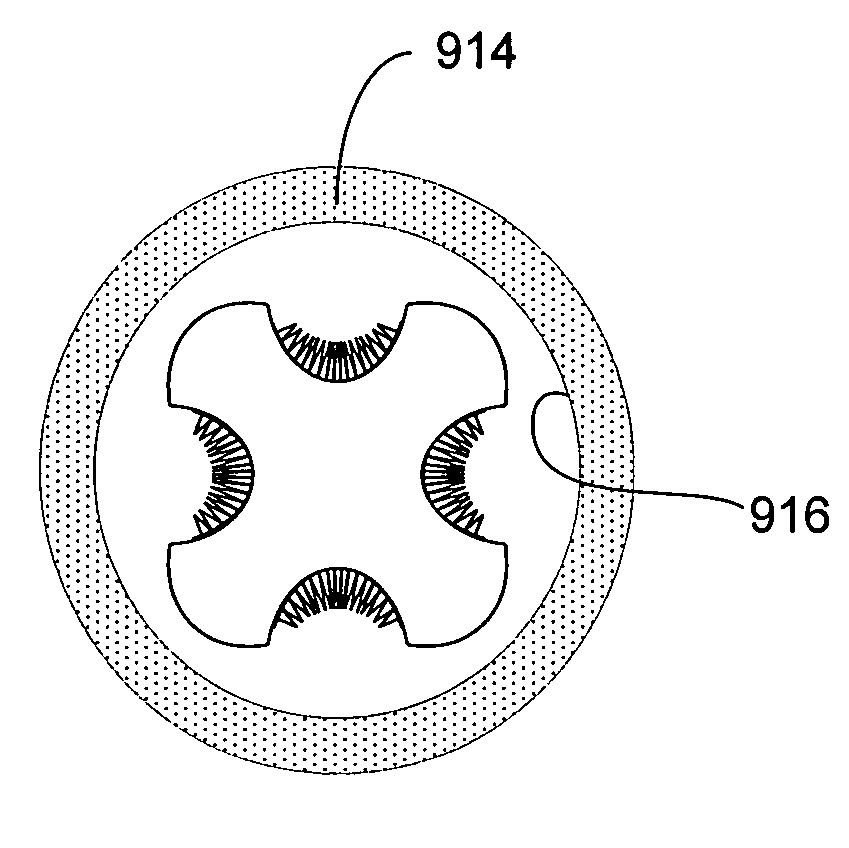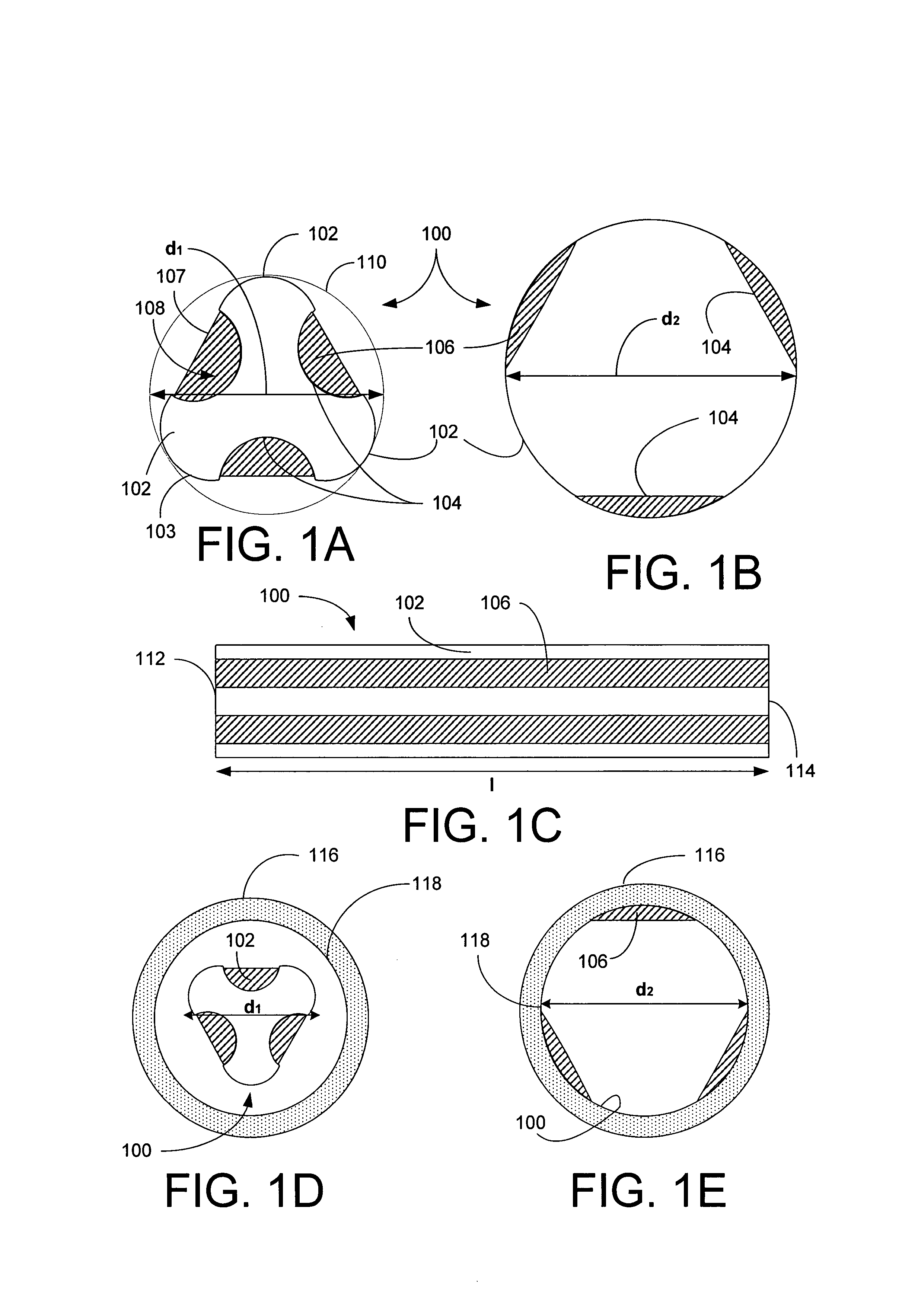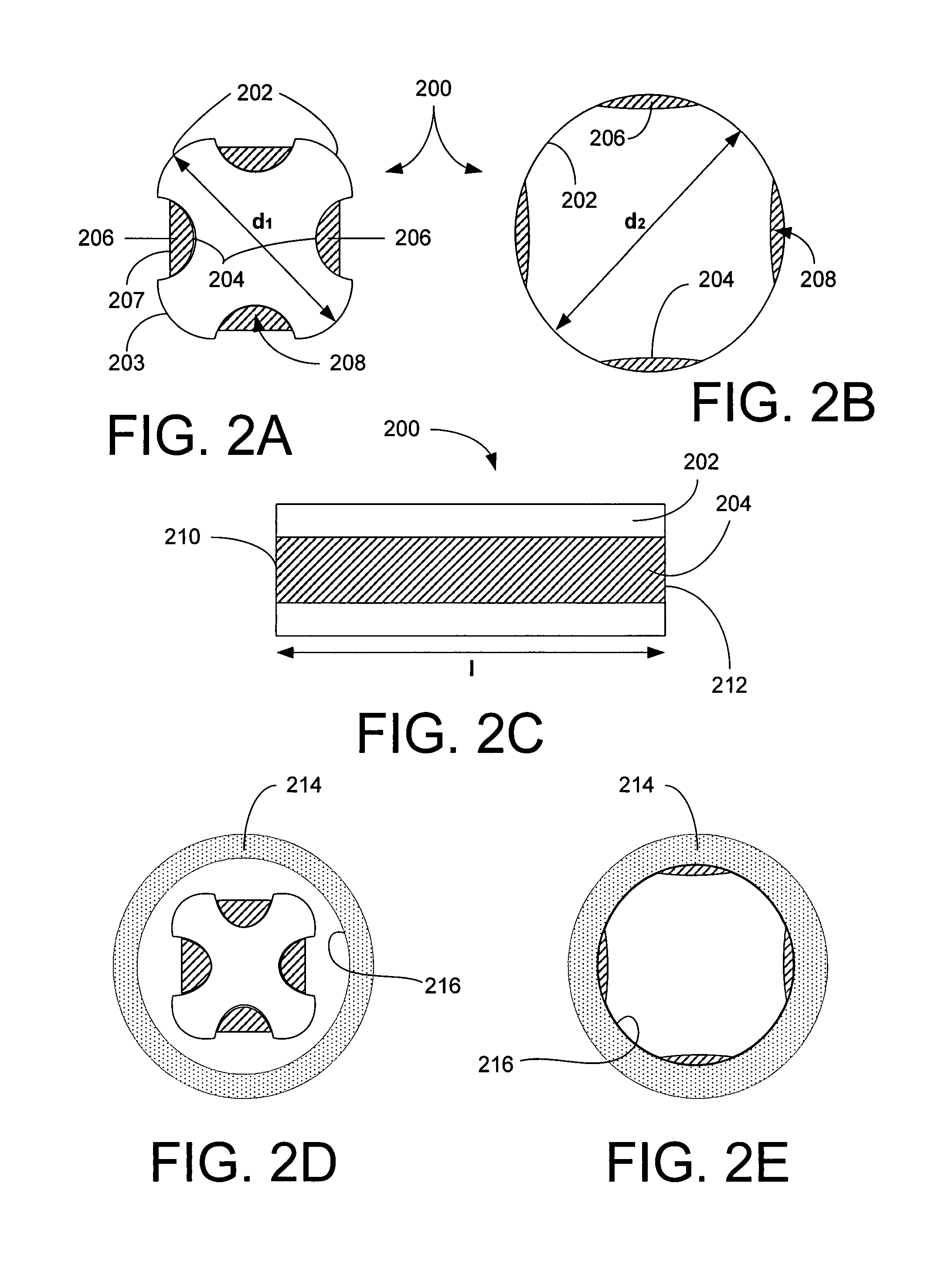Method and apparatus for stent deployment with enhanced delivery of bioactive agents
a bioactive agent and stent technology, applied in the field of stents, can solve the problems of lack of bioactive or penetration agents for stents, and achieve the effect of enhancing the penetration rate of bioactive agents
- Summary
- Abstract
- Description
- Claims
- Application Information
AI Technical Summary
Benefits of technology
Problems solved by technology
Method used
Image
Examples
first embodiment
[0102]Referring now to FIGS. 1A–B, a stent 100 of the present invention is shown in cross-section to have a generally triangular cross-section in its un-deployed state and a generally circular cross-section in its deployed state, respectively. The stent 100 includes three convex arcuate, non-recessed regions 102 and three concave recessed regions 104, where the regions 102 and 104 regions alternate. The stent 100 also includes a bioactive composition 106 deposited in protected zones 108 located in the recessed regions 104, where the composition 106 outer surface 107 is below an outer surface 103 of the non-recessed areas 102. The stent's cross-sectional dimension in its undeployed state, as shown in FIG. 1A, can be inscribed in a first circle 110 having a first diameter d1 and after deployed, the stent assumes a substantially circular contour having a diameter d2, where d2 is greater than or equal to d1.
[0103]Referring now to FIG. 1C, the stent 100 is shown in a side view where the ...
second embodiment
[0105]Referring now to FIGS. 2A–B, a stent 200 of the present invention is shown in cross-section to have a generally square cross-section in its un-deployed state and a generally circular cross-section in its deployed state, respectively. The stent 200 includes four substantially rigid arcuate non-recessed regions 202 and four deformable, concave recessed regions 204 interposed between each pair of non-recessed regions 202 so that the regions 202 and 204 alternate. The stent 200 also includes a bioactive composition 206 deposited in protective zones 208 associated with each recessed region 204. Again, the composition 206 has an outer surface 207 that is below an outer surface 203 of the non-recessed areas 202.
[0106]In its undeployed state, the stent 200, as shown in FIG. 2A, has a first diameter or cross-sectional dimension of d1 and after deployed, the stent 200 assumes a substantially circular contour having a diameter d2 in its deployed state, where d2 is greater than or equal t...
third embodiment
[0109]Referring now to FIGS. 3A–B, a stent 300 of the present invention is shown in cross-section to have a generally pentagonal (5-sided) cross-section in its un-deployed state and a generally circular cross-section in its deployed state, respectively. The stent 300 includes five substantially rigid arcuate non-recessed regions 302 and five deformable, recessed regions 304 interposed between each pair of non-recessed regions 302 so that the regions 302 and 304 alternate. The stent 300 also includes a bioactive composition 306 deposited in protected zones 308 associated with each recessed region 304. Again, the composition 306 has an outer surface 307 that is below an outer surface 303 of the non-recessed areas 302. The stent 300 has an undeployed or first diameter or cross-sectional dimension (largest cross-sectional dimension) d1 and a deployed or second diameter or cross-sectional dimension (largest cross-sectional dimension) d2, where d2 is greater than or equal to d1.
[0110]Refe...
PUM
 Login to View More
Login to View More Abstract
Description
Claims
Application Information
 Login to View More
Login to View More - R&D
- Intellectual Property
- Life Sciences
- Materials
- Tech Scout
- Unparalleled Data Quality
- Higher Quality Content
- 60% Fewer Hallucinations
Browse by: Latest US Patents, China's latest patents, Technical Efficacy Thesaurus, Application Domain, Technology Topic, Popular Technical Reports.
© 2025 PatSnap. All rights reserved.Legal|Privacy policy|Modern Slavery Act Transparency Statement|Sitemap|About US| Contact US: help@patsnap.com



